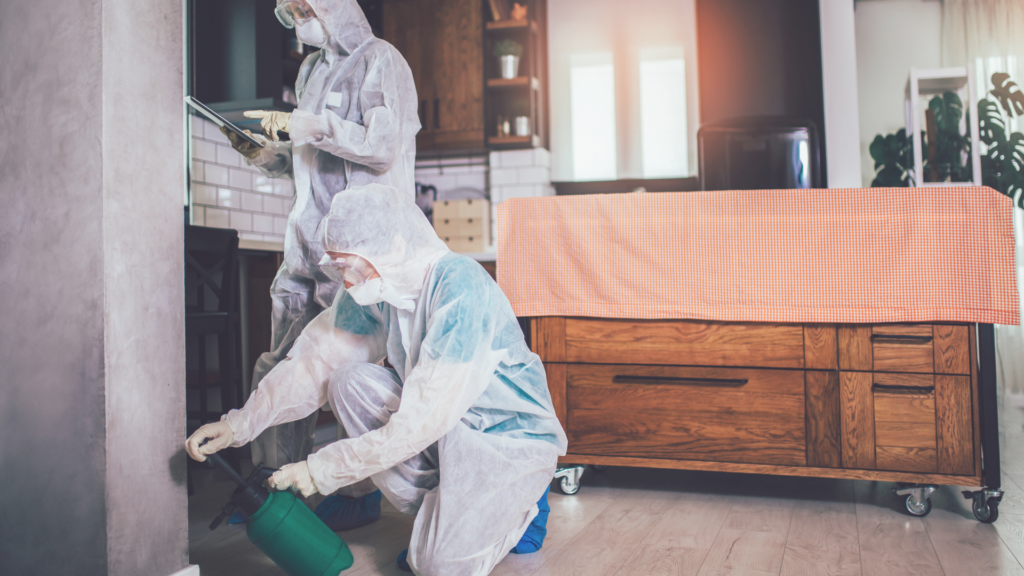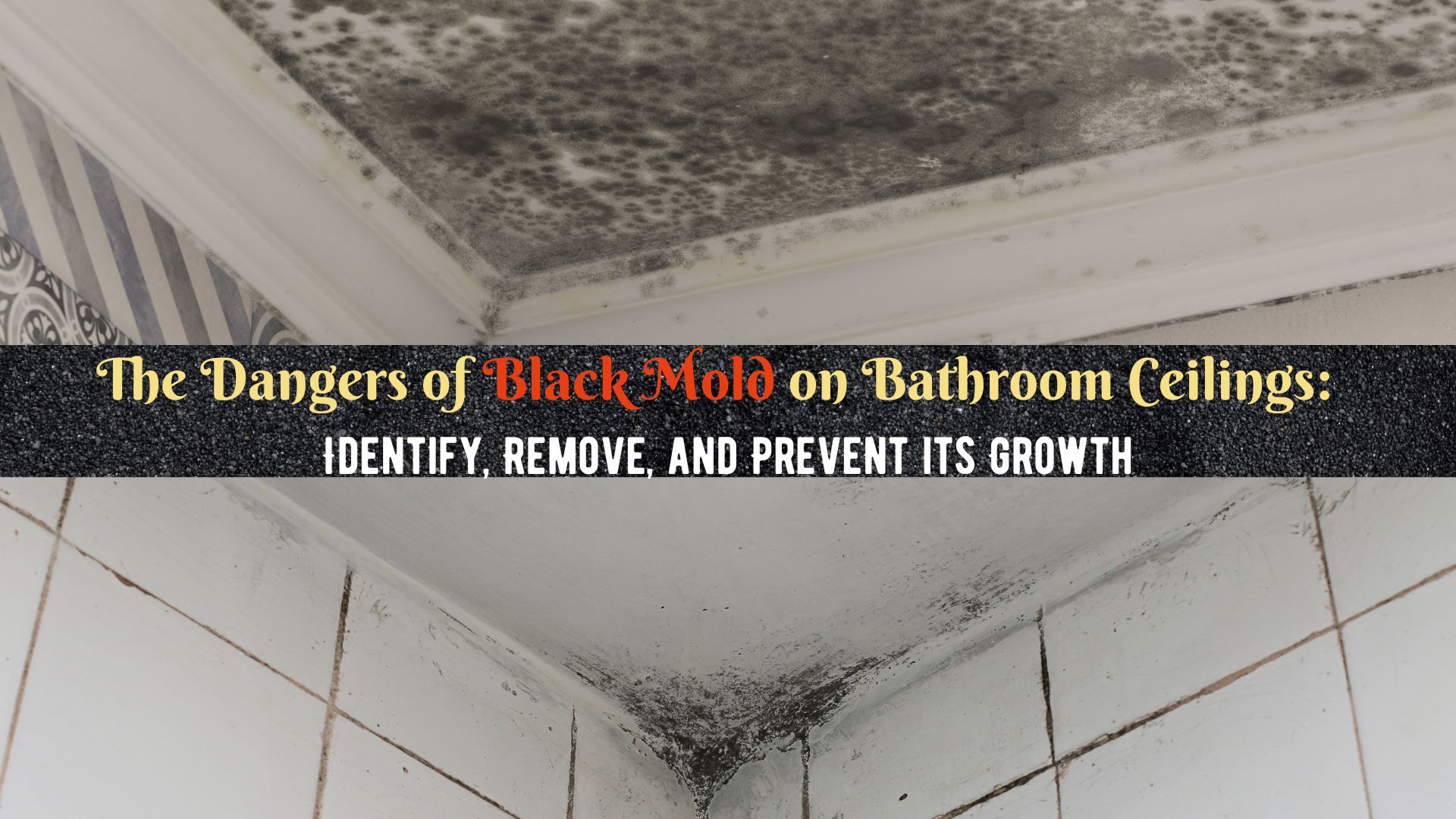When disaster strikes, it leaves behind a trail of devastation and despair. Whether it’s a powerful storm, a destructive fire, or a devastating flood, the aftermath can be overwhelming. However, in the midst of chaos, there are dedicated professionals who specialize in disaster restoration services, providing a glimmer of hope and helping to rebuild shattered lives.
In this blog, we will explore the world of disaster restoration services, diving into their significance, the processes involved, and the remarkable individuals who tirelessly work to bring light to the darkest situations. Join us as we uncover the power of disaster restoration services and their invaluable role in restoring hope and helping communities rebuild.
1. Understanding Disaster Restoration Services
a. Defining Disaster Restoration
Disaster restoration services involve repairing and restoring properties damaged by disasters. These services are different from regular maintenance and repair work because they tackle the unique challenges of catastrophic events.
Professionals in this field have specialized knowledge and skills to assess, mitigate, and restore properties affected by floods, fires, storms, and more. They use advanced techniques and equipment to remove debris, repair structures, and bring properties back to their pre-disaster condition. Additionally, they offer support and guidance to help individuals and communities recover emotionally and rebuild their lives.
b. Types of Disasters
- Floods: Occur when an area gets inundated with excessive water, causing damage to buildings and infrastructure.
- Fires: Result from various causes, such as electrical faults or accidents, leading to damage from flames, heat, and smoke.
- Storms: Severe weather events like hurricanes, tornadoes, and thunderstorms can cause widespread damage with strong winds, heavy rain, and flooding.
- Earthquakes: Shaking of the Earth’s surface, leading to structural damage and disruptions to utilities.
- Landslides and Mudslides: Soil and debris sliding down slopes, causing destruction to structures in their path.
- Hurricanes and Cyclones: Powerful tropical storms with high winds, heavy rain, and coastal flooding.
- Tornadoes: Destructive funnel-shaped winds causing localized damage to buildings and trees.
- Chemical or Industrial Accidents: Hazardous material spills, explosions, or leaks from industrial sites, requiring specialized restoration.
- Structural Collapses: Building failures due to poor construction, accidents, or natural disasters.
c. Immediate Response
When it comes to disaster restoration, a quick response is vital. Restoration teams understand the urgency and take immediate action to assess the situation, secure the property, and begin cleanup and stabilization efforts. These initial steps lay the groundwork for the rest of the restoration process.
Acting swiftly helps prevent further damage and creates a safe environment for further assessment and repairs. Quick response also provides reassurance to those affected, showing that help is on the way and instilling confidence in the restoration process.
2. The Role of Disaster Restoration Professionals
a. Expertise and Training
Disaster restoration professionals have specialized knowledge and training in all aspects of the restoration process. They participate in specialized training programs that provide them with the necessary knowledge and skills for their work. This training typically includes learning about safety protocols, operating equipment, and techniques for assessing the extent of the damage.
- Safety protocols: Restoration professionals are trained in safety measures to ensure their own well-being as well as the safety of others during the restoration process. This includes understanding and following guidelines for personal protective equipment (PPE), handling hazardous materials, and working in potentially dangerous environments.
- Equipment operation: Restoration projects often require the use of specialized equipment such as water extraction tools, industrial fans, dehumidifiers, air scrubbers, thermal imaging cameras, and more. Professionals receive training on how to operate these tools efficiently and effectively to maximize the restoration process.
- Damage assessment: One crucial aspect of the expertise of restoration professionals is their ability to assess the extent of the damage caused by the disaster. They are trained to evaluate the affected properties, identify areas of concern, and document the damage accurately. This assessment serves as a foundation for developing a restoration plan and estimating the necessary resources.
b. Assessing the Damage
When disaster restoration professionals arrive at a damaged property, they carefully assess the extent of the damage. They examine the affected areas and determine the severity of the destruction. This evaluation helps them identify specific issues that need attention and decide on the best restoration approach.
During the assessment, professionals inspect various parts of the property such as structures, electrical systems, plumbing, HVAC, and personal belongings. They look for signs of water, fire, smoke, mold, or other damage depending on the type of disaster. By documenting the damage, they can create a comprehensive restoration plan.
The assessment also helps professionals estimate the resources required for restoration, including materials, equipment, manpower, and time. This information is crucial for accurate cost estimates and ensuring a smooth restoration process.
c. Restoration Techniques
After assessing the damage, restoration professionals employ specialized techniques to clean, repair, and restore the damaged properties. These techniques are tailored to address specific types of damage commonly encountered in disaster situations.
- Water damage: When there is water damage, restoration professionals use techniques like removing water, drying, reducing humidity, and controlling moisture. They may also use thermal imaging to find hidden moisture and ensure thorough drying.
- Fire & smoke damage: For fire and smoke damage, professionals use methods to remove soot, clean surfaces, eliminate odors, and restore affected areas. They might use special cleaning agents, ozone generators, air scrubbers, and thermal fogging.
- Mold infestation: When dealing with mold growth, restoration professionals employ techniques such as containing mold, removing it, and remediation. They follow industry guidelines and use proper protective gear for safe and effective mold removal.
- Structural issues: If the disaster causes structural damage, professionals may stabilize structures, perform repairs, or rebuild as needed. They collaborate with structural engineers or other experts to ensure the property’s structural integrity.
d. Collaborative Efforts
Professionals collaborate with other experts, like contractors, electricians, plumbers, and carpenters, to ensure a smooth restoration process. They coordinate efforts to handle different aspects of the restoration project, such as electrical repairs, plumbing fixes, reconstruction, and finishing work.
Through their expertise, assessment skills, restoration techniques, and collaborative efforts, disaster restoration professionals play a crucial role in helping individuals and communities recover from disasters and rebuild their homes and communities.
3. Restoring Lives and Communities
a. Emotional Support
Restoration teams know that disasters can be emotionally challenging. They provide emotional support alongside practical help. They listen to people’s worries and feelings, offering empathy and understanding. They create a safe environment for people to express themselves without judgment.
By listening attentively, restoration professionals validate the emotions and experiences of those affected by the disaster. They recognize the difficulties and struggles faced by individuals and communities, allowing them to feel heard and understood. This support plays a significant role in the healing process and helps restore a sense of normalcy.
Additionally, restoration teams may provide information and resources to help individuals cope with the emotional aftermath. They can refer people to mental health professionals or support groups specializing in trauma or crisis counseling. These resources enable individuals to access the necessary guidance and support to manage their emotional challenges.
b. Salvaging Sentimental Items
Restoration professionals understand that sentimental items have a deep emotional value for their owners. These items can be things like photos, artwork, jewelry, clothing, or furniture that hold special memories or historical significance. When these items get damaged by water, fire, mold, or other disasters, restoration professionals step in to save and restore them. They know that these items are irreplaceable and mean a lot to the owners. So, their main aim is to salvage and preserve these items as well as they can.
Restoration professionals use specialized techniques to save sentimental items. They start by assessing the damage and creating a tailored restoration plan. They clean the items carefully, using gentle methods and materials suitable for each item’s fragility. For example, delicate fabrics may be dry cleaned or hand-washed, while metals may be treated with specific solutions and tools to remove tarnish or corrosion.
Repairing sentimental items involves fixing structural or cosmetic damage. Restoration professionals are skilled in repairing various materials like wood, ceramics, glass, or metals. They use techniques such as rejoining broken pieces, filling cracks, or replacing missing parts to restore the item’s appearance and integrity.
Throughout the restoration process, professionals prioritize preserving the sentimental value. They aim to maintain the original character and looks while ensuring stability and functionality. They may collaborate with conservators or experts to ensure accurate restoration.
c. Rebuilding Communities
Rebuilding communities after a disaster is a complex process that requires the concerted efforts of various stakeholders, including disaster restoration services. These services play a crucial role in the post-disaster recovery by contributing to the rebuilding of communities in several significant ways.
Job Opportunities: After a disaster, there is a big demand for workers to help with rebuilding. Disaster restoration services hire skilled professionals like construction workers, carpenters, electricians, plumbers, and others. By offering jobs to local people, these services help ease the financial difficulties in the community. Creating job opportunities not only helps individuals earn money but also boosts the local economy.
Support for Local Businesses: Disasters can be very harmful to local businesses, causing damage, disruptions, and financial losses. Disaster restoration services work together with local businesses by providing materials, equipment, and specialized services. By supporting and collaborating with these businesses, restoration services help them recover and get back to work. This contributes to restoring economic activity and stability in the community.
Restoration of Homes, Schools, and Community Spaces: Disaster restoration services have a main goal of fixing and rebuilding homes that were damaged in the disaster. They make sure homes are safe and livable again. These services also focus on restoring schools, community centers, hospitals, parks, and other important public places. By restoring these essential places, restoration services help communities return to normal and provide spaces for people to socialize, learn, and receive healthcare.
Recovery and Revitalization: Communities hit by disasters struggle to recover and rebuild their economies. Disaster restoration services are crucial for this process. They restore damaged properties and infrastructure, which helps businesses get back on their feet. This attracts investments, boosts tourism, and creates a better environment for economic growth. Restoring community spaces also promotes community engagement and a sense of pride, which further revitalizes the community.
Foster Resilience: Rebuilding communities after a disaster is not only about going back to how things were before but also about making them stronger for the future. Disaster restoration services can use techniques and technologies that improve the resilience of rebuilt structures and infrastructure. This may involve using stronger building codes, sustainable and disaster-resistant designs, and advanced materials and technologies. By prioritizing resilience during restoration, communities can be better prepared for future disasters and reduce their impact.
4. The Future of Disaster Restoration
a. Technological Advancements
Advances in technology are shaping the field of disaster restoration. Drones are used for damage assessment, advanced drying systems speed up the process, and eco-friendly methods are being adopted.
b. Climate Change and Preparedness
With climate change leading to more frequent and intense disasters, preparedness becomes crucial. Restoration professionals will focus on strategies and technologies to better respond to climate-related disasters.
c. Public Awareness and Education
Raising public awareness about disaster preparedness and the role of restoration services is important. Educating communities about emergency plans, evacuation procedures, and involving restoration professionals promptly after a disaster will minimize damage and speed up recovery.
Hire an Expert, Like Superior Restoration
The future of disaster restoration holds promising developments in technology, climate change adaptation, and public awareness. As we navigate these challenges, companies like Superior Restoration are at the forefront, ready to provide expertise and support.
Superior Restoration, with its extensive experience and commitment to excellence, is well-positioned to embrace technological advancements in the field. They leverage innovative tools and techniques to deliver efficient and effective restoration services, ensuring quick response times and optimal outcomes.
With a proactive approach to climate change and disaster preparedness, Superior Restoration stays ahead of the curve. They continually adapt their strategies and methodologies to address the evolving risks associated with climate-related disasters. By implementing resilient practices and integrating sustainability principles, they contribute to long-term restoration solutions that safeguard both the environment and communities.
Superior Restoration also recognizes the importance of public awareness and education in disaster preparedness. They actively engage in public outreach initiatives, sharing valuable information, tips, and resources to empower individuals and communities. Through their educational campaigns, they help people understand the importance of prompt action, the involvement of restoration professionals, and proper post-disaster recovery practices.
Open 24/7 and always ready to serve you. For your disaster restoration needs, contact Superior Restoration today!






